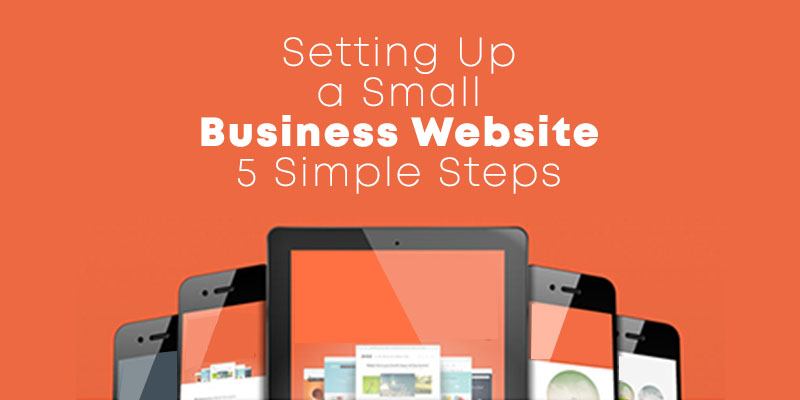I hope you enjoy reading this blog post.
If you want to get more traffic, Contact Us

Click Here - Free 30-Minute Strategy Session
Be quick! FREE spots are almost gone for this Month. Free Quote

A website serves as a digital storefront for small businesses, allowing them to establish an online presence and engage with potential customers globally. It plays a critical role in showcasing products, services, and brand identity while building credibility. Small business websites provide a platform to share essential information such as contact details, operating hours, and unique offerings.

Click Here – Free 30-Minute Strategy Session
Be quick! FREE spots are almost gone for this Month
Creating a well-designed website enables businesses to compete in the digital marketplace and adapt to changing consumer behaviour. Effective design and functionality ensure that visitors can navigate seamlessly and access relevant content quickly. A robust online presence enhances visibility, boosts customer engagement, and fosters growth in an increasingly connected world.
A website serves as the digital face of a business, providing a centralised platform to showcase products, services, and company information. It enhances credibility by making the business appear professional and trustworthy, ensuring potential customers can easily find and engage with it. Websites offer accessibility around the clock, allowing businesses to remain open to consumers regardless of location or time zone.
Additionally, a website empowers businesses to reach wider audiences through digital marketing efforts like SEO and social media integration. It also facilitates direct communication through contact forms or chat features. Businesses without websites may miss crucial opportunities to compete in today’s digital-first marketplace.
Establishing clear objectives is essential for a small business website. The primary purpose may involve increasing brand visibility, driving sales, generating leads, or providing customer support. Each goal impacts design, content, and functionality decisions. Identifying the target audience is equally critical. Analyse demographics, interests, behaviours, and pain points to tailor the website effectively.
Begin by asking who the products or services are for and what problems they solve. Use these insights to choose relevant messaging, design elements, and calls-to-action. A well-defined audience ensures the website aligns with user needs while supporting broader business goals. Clear objectives and audience insights are the foundation of success.
Selecting a domain name is crucial when establishing an online presence for a small business. A domain name should be memorable, concise, and reflect the business’s identity or core offerings. Using relevant keywords can boost website visibility in search results. Businesses should prioritise simplicity and avoid excessive punctuation or special characters to ensure easy typing and sharing.
It is essential to check domain availability through registrars and avoid names that are too similar to competitors. Opting for a well-known extension like .com or .co.uk can enhance credibility. Linking branding elements with the domain helps reinforce recognition and trust. Businesses must ensure the name resonates with their target audience.
Choosing a reliable web hosting service is critical for ensuring consistent website performance and availability. Businesses should evaluate hosting options based on uptime guarantees, bandwidth capacity, and storage space. It is essential to confirm the service offers scalability to accommodate future growth, as well as security features such as SSL certificates and malware protection.
User-friendly management tools, like control panels, simplify tasks such as domain configuration and file uploads. Hosting plans should be compared to assess pricing, customer support quality, and server locations. Reviews from other users can provide insights into dependability and customer experience, helping make informed decisions.
Choosing the right website platform is crucial for small business owners as it shapes both functionality and user experience. Factors such as budget, technical skills, and business goals should guide this decision. Platforms like WordPress offer extensive customisation options, while solutions like Shopify cater to e-commerce needs with built-in features. Simplicity and ease of use are significant considerations for time-constrained businesses, making website builders like Squarespace or Wix suitable choices. Key aspects such as scalability, mobile responsiveness, and integrations with existing tools must also be prioritised. Thorough research and understanding of these platforms help tailor a website to specific business requirements effectively.
When designing a small business website, prioritising user experience is essential. A visually engaging design that aligns with the brand enhances credibility and trust. Navigation must be intuitive, allowing visitors to find information effortlessly. Consistent fonts, colours, and imagery create cohesion throughout the site.
Key elements to consider include:
Responsive design: Ensuring the website adjusts seamlessly to various devices.
Clear calls to action (CTAs): Encouraging users to take specific actions like purchasing or contacting.
Fast-loading pages: Minimising loading times to reduce bounce rates.
Accessible design: Meeting accessibility standards for inclusivity.
SEO-friendly structure: Optimising the layout for search engine rankings.
By focusing on these principles, businesses can create an impactful online presence tailored to their audience’s needs.
A well-crafted website for a small business should include key pages that inform and engage visitors. These essential pages provide a foundation for user trust, navigation, and conversion.
Homepage: Serves as an entry point, showcasing the brand, core offerings, and value propositions.
About Us: Shares the company’s story, mission, values, and team members to build connections.
Services/Products Page: Displays detailed descriptions, pricing, and benefits of the services or products offered.
Contact Page: Highlights phone numbers, email addresses, physical locations, and a contact form to simplify communication.
Privacy Policy: Explains how user data is collected, stored, and utilised to ensure transparency and compliance.
Testimonials/Case Studies: Features client reviews or examples of successful projects to establish credibility.
Blog/Resources: Provides helpful articles, guides, or insights in relevant niches, attracting organic traffic.
A well-designed small business website must prioritize mobile responsiveness and accessibility to reach a broader audience. Mobile responsiveness ensures the site adapts seamlessly to various screen sizes, offering a consistent browsing experience across devices. Tools like responsive design frameworks can aid in achieving this. Accessibility involves meeting standards such as WCAG to cater to individuals with disabilities.
Steps to ensure mobile responsiveness and accessibility include:
Testing across multiple devices: Evaluate functionality on smartphones, tablets, and desktop computers.
Optimising images and text: Use scalable visuals and readable typography.
Implementing alt text for images: Provide descriptions for screen readers.
Ensuring keyboard navigation support: Allow full access without a mouse.
Regularly conducting audits improves user experience and compliance.
Effective search engine optimisation (SEO) ensures a website’s visibility in search results, attracting valuable traffic. New websites should focus on keyword research to identify terms relevant to their industry. Structuring content around these keywords is essential, leading to improved rankings. Titles, meta descriptions, and headers should include targeted keywords naturally.
Mobile optimisation is critical as search engines prioritise mobile-friendly websites. Fast-loading pages and clean internal linking improve user experience and boost SEO performance. Using alt text for images aids accessibility and helps search engines index visual content. Regularly updating content signals relevance to search algorithms, enhancing rankings over time.
Marketing tools empower small businesses to enhance online visibility and engagement effectively. Businesses can leverage email marketing platforms to communicate with customers and drive traffic to their websites. Social media management tools streamline content creation and scheduling, enabling brands to maintain an active presence across multiple platforms.
Analytics tools are crucial for tracking website performance. Platforms like Google Analytics provide insights into user behaviour, traffic sources, and key metrics, enabling data-driven decision-making. Search engine optimisation (SEO) tools assist in identifying relevant keywords and improving website rankings.
Combining marketing tools with analytics helps businesses adapt strategies, optimise campaigns, and confidently focus resources where they yield the best results.
Regular maintenance is essential for optimal website performance and security. Key tasks include monitoring updates for software, plugins, and themes to prevent vulnerabilities. Conduct routine backups to ensure data recovery in case of unexpected issues. Test your site’s compatibility and responsiveness across various devices and browsers frequently.
To improve user experience, revisit and refine your website content regularly for relevance and accuracy. Check links to avoid broken paths that frustrate visitors. Additionally, monitor website speed; slow loading times can impact engagement and SEO rankings. Setting up automated monitoring tools helps identify errors quickly, ensuring smooth operation and fast resolutions.
Small business owners often face obstacles during website setup. One common challenge is neglecting mobile responsiveness, which can lead to poor user experience for visitors on tablets or smartphones. Regularly testing the site on multiple devices ensures functionality across all platforms.
Another issue involves unclear navigation menus, causing confusion and increasing bounce rates. Simplifying the structure and ensuring easy-to-find links helps visitors locate information quickly.
Underestimating the importance of loading speed is another mistake which can drive potential users away. Compressing images, using efficient hosting, and limiting unnecessary plugins improve performance. Adhering to these practices mitigates hindrances, ensuring a seamless website experience.
Small business owners must evaluate the performance of their website regularly to ensure it meets their goals. They should prioritise optimising website speed, usability, and mobile responsiveness. It is essential to integrate analytics tools for tracking visitor behaviour, providing insights into improvement areas. Implementing feedback mechanisms allows businesses to stay connected with customer needs and preferences. Regular updates to content and design keep the website fresh, engaging, and relevant.
Moving forward, businesses can explore advanced tools such as SEO plugins and e-commerce functionalities to enhance their website’s effectiveness further. Continuous learning and adaptation are key steps to maintaining long-term online success.

LEAVE A REPLY